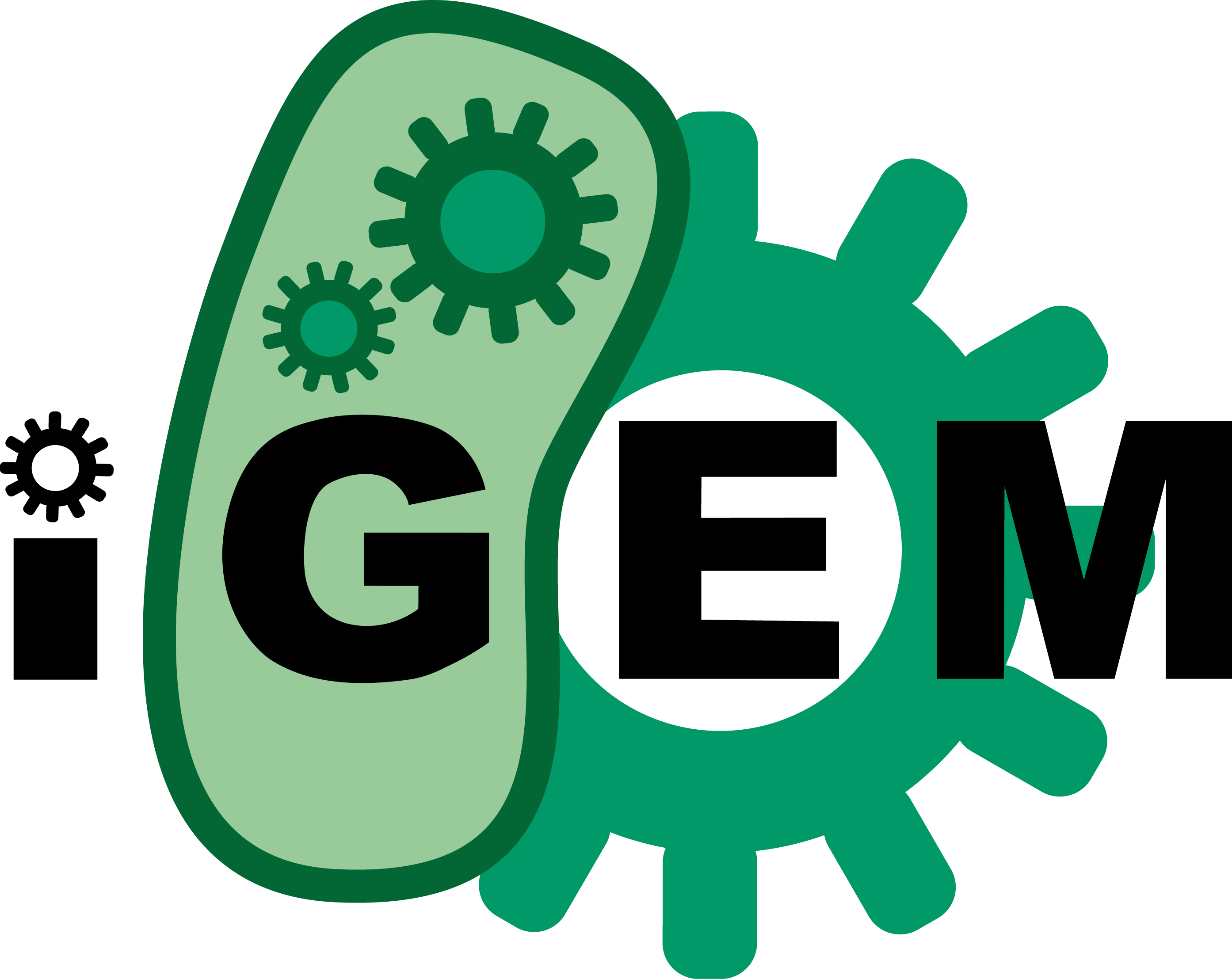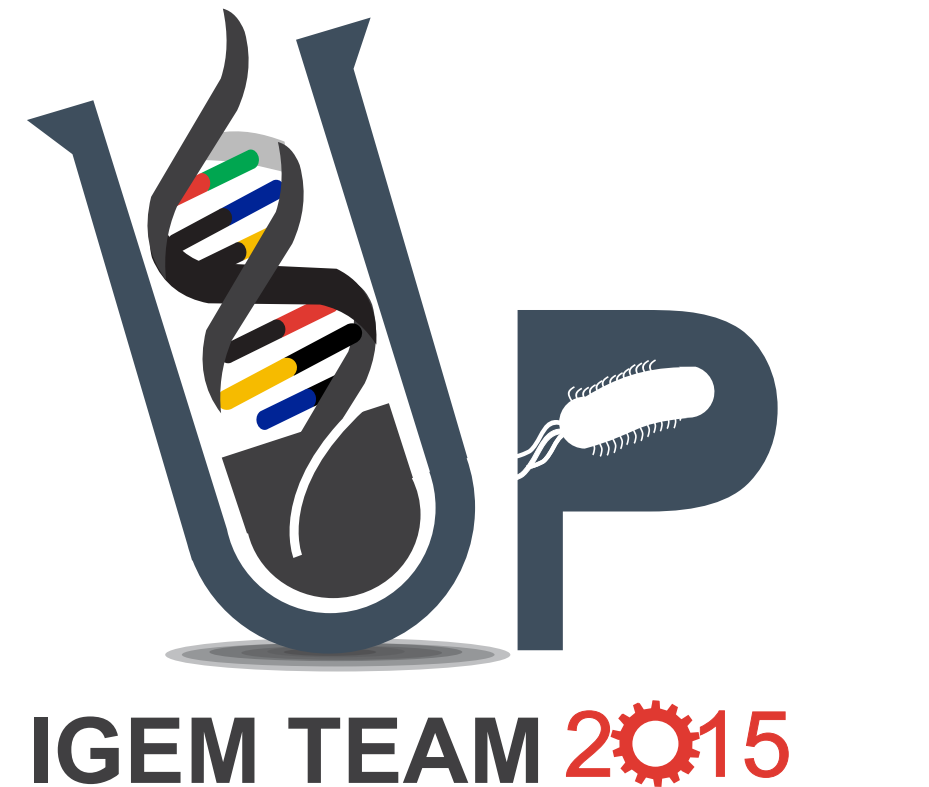Difference between revisions of "Team:Pretoria UP/Practices"
| Line 77: | Line 77: | ||
</p> | </p> | ||
| − | + | <br> | |
| Line 85: | Line 85: | ||
With the recent advent of synthetic biology, we realized that high school learners in previously disadvantaged areas may not yet have heard about this cutting edge-field. In our Human Practices Project, we took the opportunity to both educate Grade 11 learners about synthetic biology as well as compare awareness, attitudes and consumer choice between learners from contrasting socio-economic circumstances. | With the recent advent of synthetic biology, we realized that high school learners in previously disadvantaged areas may not yet have heard about this cutting edge-field. In our Human Practices Project, we took the opportunity to both educate Grade 11 learners about synthetic biology as well as compare awareness, attitudes and consumer choice between learners from contrasting socio-economic circumstances. | ||
</p> | </p> | ||
| − | + | <br> | |
<h3>The Survey </h3> | <h3>The Survey </h3> | ||
Revision as of 18:48, 18 September 2015
Human Practices
Synthetic Biology Awareness and Attitudes Among South African Youths: a Comparison of Socio-economic Influences
Project background
South Africa has a unique, turbulent and controversial political history of racial segregation, referred to as Apartheid. Prior to democracy in 1994, a white supremacist government forced non-white racial groups (black, indian and mixed race) to live in isolated townships on the outskirts of cities, and denied them access to quality education. 26 years after the advent of a free and fair democracy in South Africa, the vestiges of the Apartheid regime still persist in the form of historically segregated neighbourhoods, poverty, lack of basic health and sanitation services and compromised education in some previously disadvantaged areas.
Our Inspiration
With the recent advent of synthetic biology, we realized that high school learners in previously disadvantaged areas may not yet have heard about this cutting edge-field. In our Human Practices Project, we took the opportunity to both educate Grade 11 learners about synthetic biology as well as compare awareness, attitudes and consumer choice between learners from contrasting socio-economic circumstances.
The Survey
Approx. one hundred Grade 11 science learners from each school were asked 11 questions relating to (1) education, age and background, (2) general perception and (3) consumer choice regarding synthetic biology, as well as (4) their projections for the future of synthetic biology and (5) whether it will be relevant in the lives of South African citizens. We compared the results from learners at Lehlabile Secondary School and Pretoria Boys’ High School to identify statistically significant differences in the answers given. Statistical differences were assessed using a Kolmogorov-Smirnov test (age distributions) or a Fisher's Exact test for categorical multiple choice questions. We applied the Bonferroni correction of multiple testing, where P* = 0.05/11 = 0.0045 (since we performed 11 calculations)
(The survey administered can be viewed Here)

Lehlabile Secondary School = LSS; Pretoria Boys' High School = PBHS
Survey Results
We expected to see a significant difference in most answers, due to the fact that there is such a big social and economic gap between the two distinct samples we surveyed. The results do show significant differences, but external influences might have had an effect on the results, for instance the videos we showed during our presentation at Lehlabile Secondary School (LSS) focused mainly on the positives of synthetic biology and it resulted that the Lehlabile sample had a more positive mindset when answering the survey. Contrasting to that is the fact that the presentation with those specific videos were not shown to the Pretoria Boys’ High School (PBHS) sample, therefore it is possible that they only knew about mostly the negatives of synthetic biology (or rather genetic modification), as is generally communicated by the mainstream and non-scientific media.
Vast differences exist between age distributions, family education and previous exposure to synthetic biology

Graph one shows a bigger distribution for LSS than PBHS, but the peak of the curve remains generally the same. Graph two shows the significant difference between the qualification of the Participant's parents. Option 'F' is highlighted to show that it is not part of the general ranking. Graph 3 illustrates that the LSS participants are less exposed to media reporting on scientific content and synthetic bilogy specifically. While the average age of Gr. 11 learners between schools was similar (17.6 in LSS and 16.9 in PBHS), LSS showed a broader distribution of ages. Possibly the biggest difference between the two samples are the qualification of the participants' parents. Qualification is generally much higher amongst the PBHS group. A large proportion of LSS students indicated that they do not know or prefer not to answer. Finally, a significant proportion of LSS learners had learned about synthetic biology for the first time through the iGEM survey. These results are consistent with known socio-economic differences between the sampled schools. All differences were statistically significant (P* < 0.05)
General perception of synthetic biology

Graph one shows that LSS are, in relation, more unsure about the future than PBHS, while PBHS show a higher percentage of participants that are negative towards Synthetic biology. Graph two sufficiently demonstrate that both groups are certain that the general public is ill-informed about Synthetic biology.
Consumer choice regarding synthetic biology

Contrasting to the "usage of SB products" in general, both groups are generally positive about the use of synthetic biology products when certain scenarios are explained. LSS are more concerned about using synthetic biology products to clean up oil spills.
Future projections for synthetic biology research

The data obtained for this question clearly illustrates the biggest concern for people living in distinctly different environments. While the LSS sample (in a rural environment) want to focus more on agriculture and medicine, the PBHS sample prefer to focus on environmental science. It shows that rural citizens (children specifically) are more concerned with providing food and solving health problems. PBHS participants generally do not experience the same health problems due to better medical services available to them and they also in general do not experience a shortage of food, which LSS participants may experience consistently.
Relevance of synthetic biology

LSS participants are excited about the future prospects of SB and the effects thereof on South African citizens. The distribution of the PBHS results indicate that they are in general more indecisive of the effect of SB on the lives of South African citizens.
Student Concerns
Concerns about Synthetic biology in LSS

Concerns about Synthetic biology in PBHS

Survey Conclusions
In conclusion, the data shows that people in rural areas are generally more positive towards synthetic biology than those in “privileged” areas. There is definitely a significant difference between the answers of the two samples, as a Fisher’s exact calculation for all but one question (Q7.2) resulted in a P-value < 0.001. This may be due to the fact that those from PBHS are more exposed to the general media and social trends, which are more cautious towards and unsure about the effects of synthetic biology.










